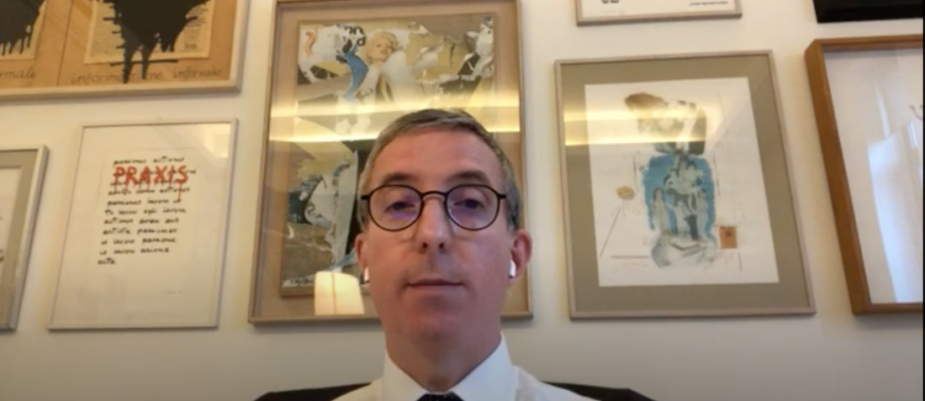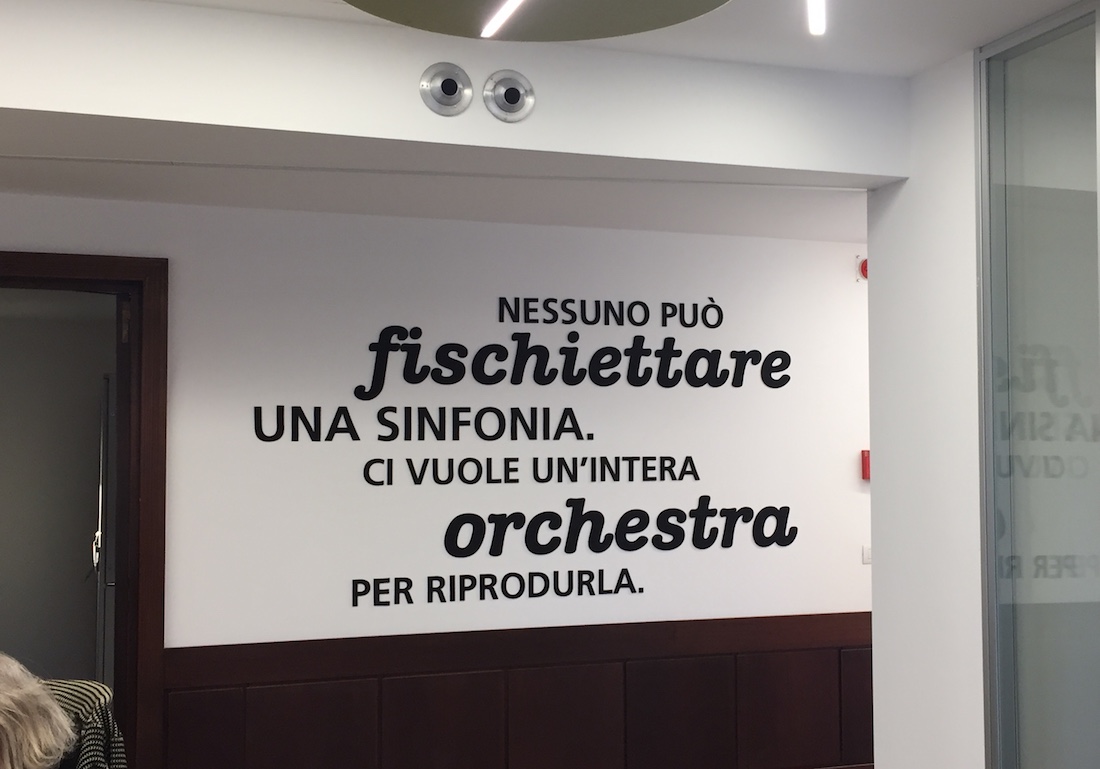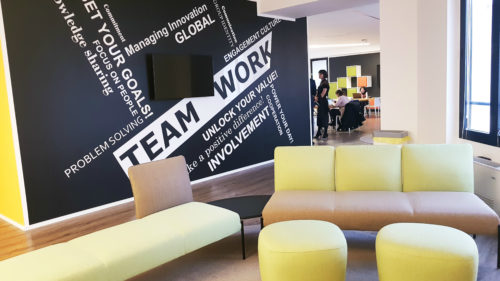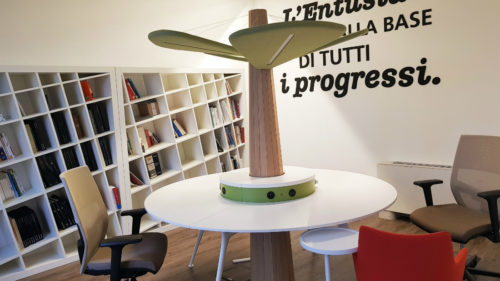
“We should lead managers to think hybrid, to imagine the hybrid”. Roberto Battaglia, Intesa Sanpaolo HR Leader of Corporate & Investment Banking, talks to us about how the physical experience of Hive (winner project of the Copernicus SmartPlaces Award 2018), was the benchmark to re-think the way of using technology. Virtual rooms are not limited to a traditional interaction mediated by the video but allow a new type of effective interaction, based on the asynchronous management of conversational flow, and on the relationship between urgency and invasiveness of the technological tool.
After interviewing Roberto Battaglia in 2018 on the pilot project “Hive – The future at work” we meet again the Head of the Personnel Department of Intesa Sanpaolo’s Corporate & Investment Banking Division to understand how the workplace has been rethought due to the pandemic.
In 2018 he defined Hive, “a platform that constitutes a new pact between the company and people”. How was this pact built during the coronavirus emergency?
That experience which involved 150 people initially and which we then extended to the whole division and building, proved to be a good benchmark for facing the pandemic. Already then, it was not just about office spaces, but a deal that included three other dimensions: technologies, processes, and behaviours. During the pandemic, we too had to remotize everything, but the main focus was on the mechanisms and processes enabled by technologies, and on people’s behaviour. Beyond the physical space, which has become the domestic space, this situation has brought new attention to the interaction between people, and to new flexibility and autonomy. There is a word that continues to guide us: trust. Indeed, a trust squared, or even cubed!
What were the side effects of this experience?
The most critical aspect is that you live constantly connected, a kind of intoxication. The video-call appears as a simple and democratic means, but it is a modality that produces collateral effects, in the sense that there is no longer a time to think and to divide working and private life. What we have done, therefore, is to encourage a constant rethinking of processes, promoting, at the same time, more virtuous behaviours. Beyond the dramatic situation that we are all experiencing, there are many lessons we are learning, and which will be very useful in the new situation.
Roberto Battaglia on Hive, interview, 2018
What lessons for example?
If, on the one hand, the physical space remained in the background, on the other hand, if there is a space that we are constantly redesigning, namely the virtual one. We launched a design stream to create hybrid worlds since only 50% of people can come back to the office nowadays. So, how do we manage it?
When we went into lockdown the room became the virtual one, but it continued to be used in the traditional way. Now, in a hybrid situation, where the manager will have a part of the team in presence and absence, how to manage this difference?
We noticed that before, whoever was at a distance was as a “piece of furniture”, since the discussion favoured who was inside the physical room. So, we started designing hybrid spaces, but so that all levels of importance were the same.
How should a virtual space for hybrid work be designed?
First, it’s not just about the video, but a rich collaboration environment. With the lockdown, everyone has discovered a technology that has been around for a very long time, but many have reduced it only to the video channel. Actually, the video channel is not the most important thing.
During this interview, we are doing a synchronous operation based on the video in which we are changing information: it is a classic interaction. We are exchanging information and someone is taking notes. It is not a smart modality. What we have to rely on is the asynchronous conversation flow management that is typical of a truly collaborative environment.
The new frontier, therefore, is to make work more and more asynchronous. And it is complicated because we are used to picking up the phone or calling and finding the other person immediately. But it’s not the most effective way in many situations. This evolution requires education, determination and the ability to adapt our way of working. This is the challenge. It is not a question of going on video 12 hours a day, because that creates stress.
What solutions have you adopted?
First of all, there is a right tool for each need: we have classified each tool on a scale that is based on the relationship between urgency and invasiveness. The least impacting tool is the email, while a WhatsApp message is more invasive because it steals attention, and attention is the scarcest resource that exists, more than time.
The attention is the main problem, because, in order to stay in contact as much as possible, we have created a high background noise, which clouded the attention on the really urgent and really important things.
The logic of urgency and invasiveness and the necessary asynchronous management of the conversation flow has led us to break down unnecessary meetings, to go beyond virtual “corridor Warriors” whose classic phrase is “I have to disconnect because I have another meeting “.
We must use technology to rethink work through the intelligence that connects all organizations. We continue to think in that light because this hybridization will always be present. There are tons of papers online, but the problem can’t be solved with simple moves. It takes a lot of practice, a lot of experimentation, a vision, and a certain type of discipline. Before the topic was the emergency, now it is evolution.
Some of the aforementioned topics mentioned in the interview were developed by Roberto Battaglia in a recently published book entitled “Startupper in Azienda”.
Text by Gabriele Masi.



















